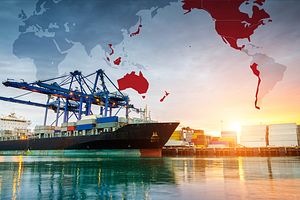There are few moments in history when policymakers and legislators have the opportunity to shape the future of the economic system for the better. The Trans-Pacific Partnership (TPP) has the potential to be cited as one of these moments. The deal, which was finalized in early October, will bring together more than 40 percent of the global economy and 12 Pacific-Rim countries. In doing so, it will not only create a gold standard for commerce, it will become a driving force in the future of the global economy.
The finalized TPP deal currently is one of the most comprehensive trade agreements in history and the result of a collaborative process between all 12 nations. The agreement eliminates tariffs and duplicative regulations that hinder trade. In addition, it establishes mutual standards for everything from labor laws and environmental standards, to the manner in which beef is produced. By cutting through red tape, the TPP will make it easier for businesses to break into the international market. These benefits will be felt by all businesses, from large multinational corporations to small and medium-sized businesses. The agreement devotes an entire chapter to ensuring that the latter group will also share in the benefits of the new trade environment.
With the finalized deal in the hands of the 12 member nations, many hurdles remain before the TPP takes effect. Each member must ratify the deal through their internal political processes. In this, the United States will be the crucial player. A politically divided U.S. Congress must ratify the deal before the American presidential race goes into full swing. As time passes, the TPP will become increasingly politicized and harder to ratify. This could imperil the deal as a whole. Failure of the U.S. Congress to ratify the deal might dissuade other nations from ratifying it. Time is of the essence.
The TPP is projected to produce an economic windfall for its members and the larger global economy. The Peterson Institute recently estimated that the global impact of the deal will generate almost $300 billion per year by 2025. In the United States, this will mean an additional $123.5 billion a year in exports by 2025. In Vietnam, the deal could push the country’s growth to as high as 11 percent in the next decade. At a time when the global economy is showing signs of slowing, the TPP will be an effective way for its 12 members to maintain an economic edge.
































